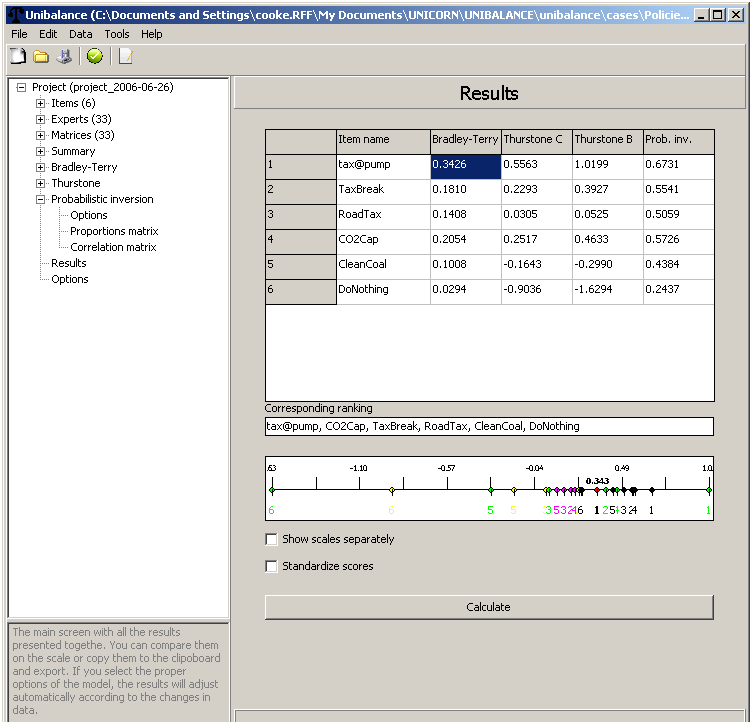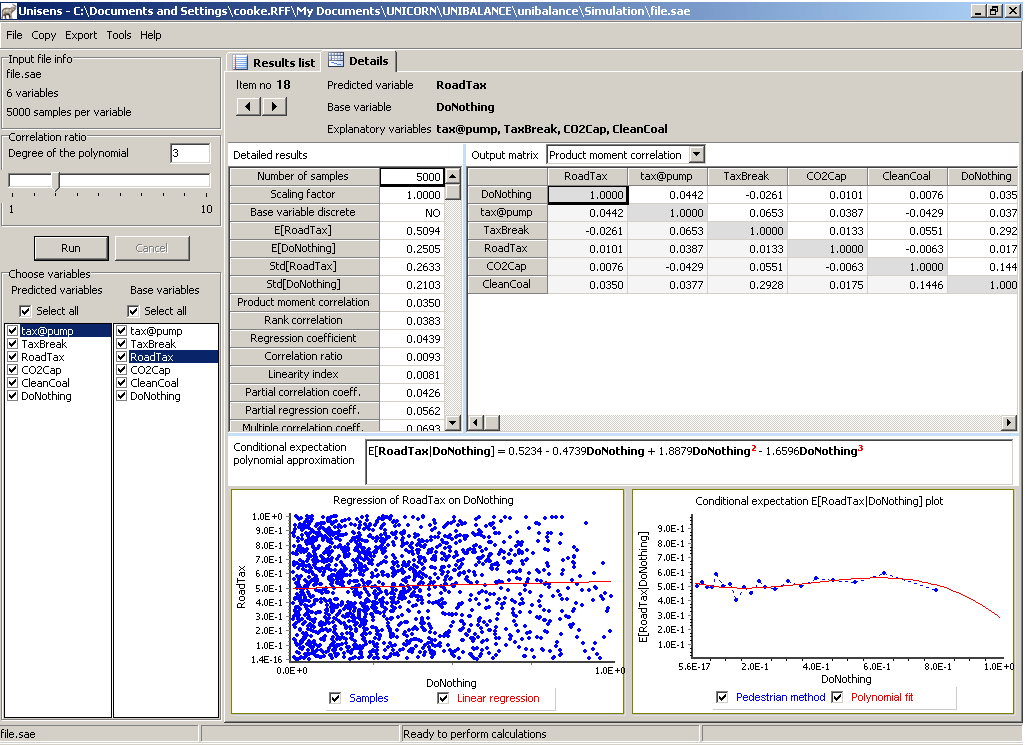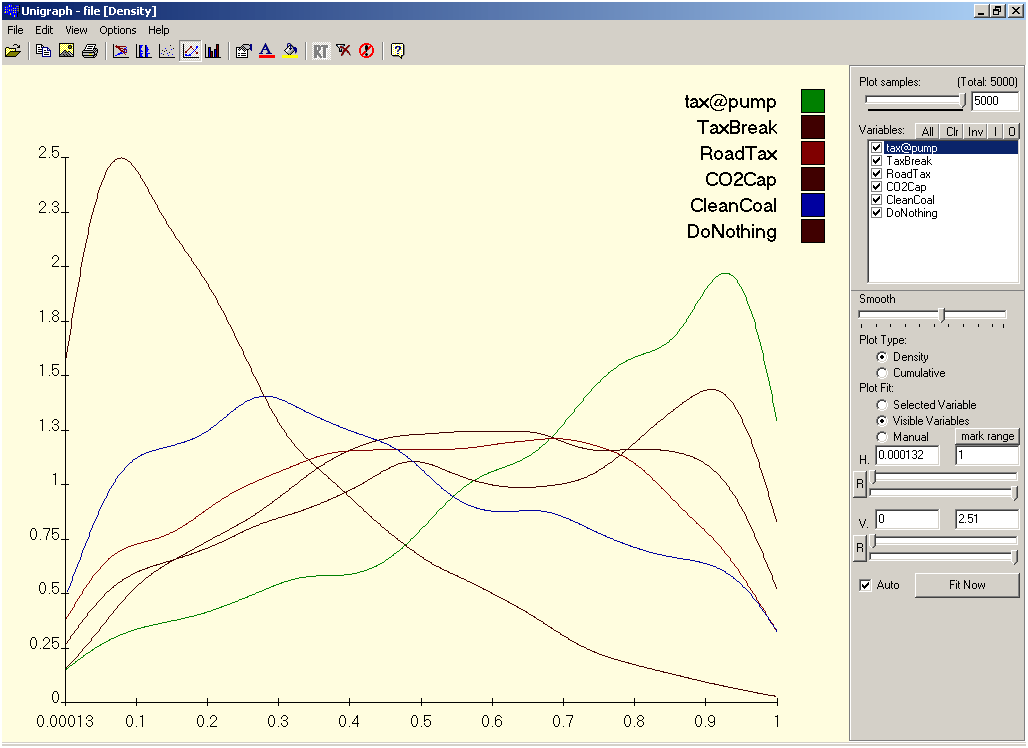Unibalance
UNIBALANCE analyses paired comparison data, for extracting group stakeholder priorities for a set of decision alternatives. It was programmed by Marcin Macutkiewicz in 2006, as part of his Masters Thesis in Risk and Environmental Modeling, under supervision of Prof. R.M.Cooke.
Download Unibalance setup file: Unibalance Setup (EXE, 770 Kbytes)
Download Unibalance help file: Unibalance Help (PDF, 160 Kbytes)
Download Unibalance user manual file: Unibalance User Manual (PDF, 440 Kbytes)
Description:
Each stakeholder chooses a preferred element from each pair of alternatives. Voids and indifferences are allowed.
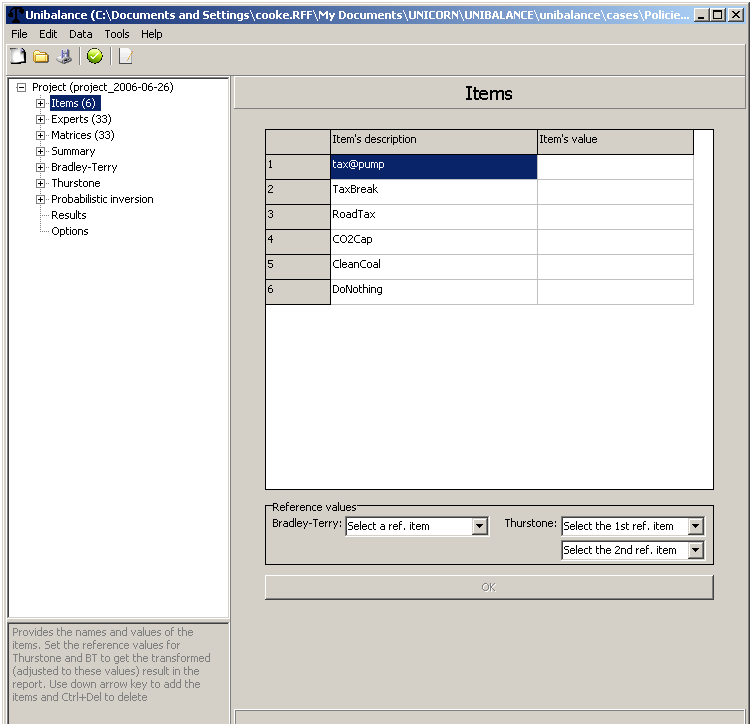

Stakeholder data is analyzed for concordance and coherence, and each individual stakeholder is tested against the null hypothesis that the preferences are random. Scale values for enabling the Bradley-Terry (logit) model and Thurstone (probit) model may be included. Confidence bounds reflecting sampling variability are computed for each model.
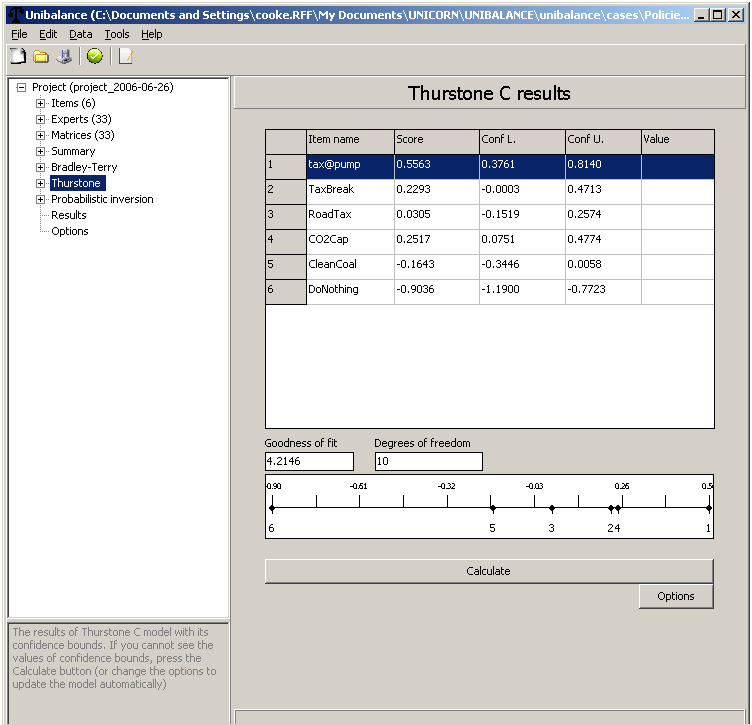
Probabilistic inversion is also supported, using either the Iterative Proportional Fitting or the PARFUM algorithms. Probabilistic inversion returns a distribution over the utilities of the alternatives such that, if stakeholders randomly drew their utilities from this distribution, the pattern of paired comparisons would be optimally reproduced. Model adequacy is judged by a Proportions Matrix, comparing observed and predicted probabilities of paired preference. Dependencies between the utilities for different alternatives are represented in a correlation matrix, where large dependences are highlighted.
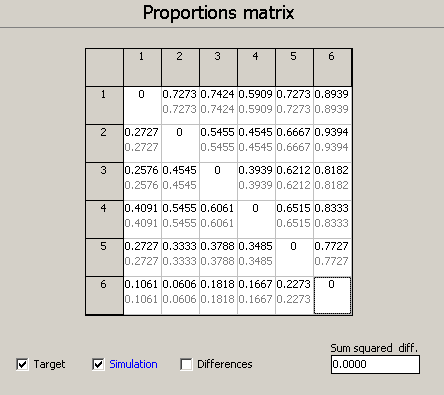
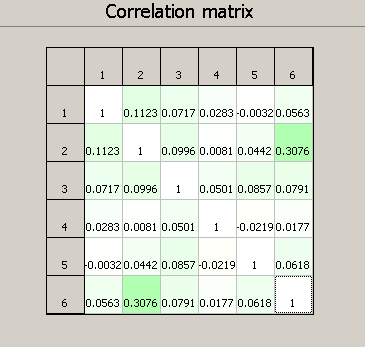
Overall comparisons between models may be viewed. The user may select input and output information for the report generator. Links port the PI results to the sensitivity analysis program UNISENS and the graphics package UNIGRAPH.
